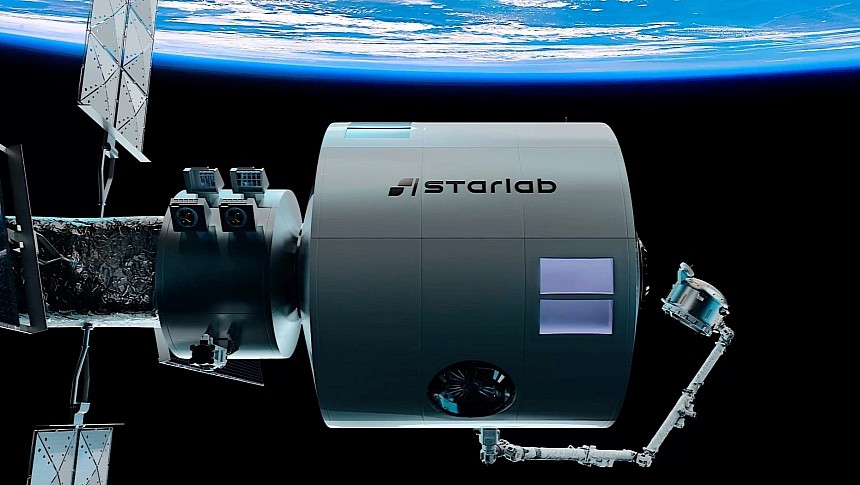The SpaceX Starship is the hottest new kid on the space rockets block. Developed to be a heavy lifter of things that are set to be sent to the Moon and even Mars, it will become the largest and most powerful rocket our species has ever flown.
The Starship is still a long way from becoming operational, with just two launches under its belt, both of which failed before completion. But work on it is progressing, and that means companies and governments are beginning to pay attention, and are already considering the rocket as a possible vehicle for their payloads to use to reach space.
Among the first companies (the first one, to our knowledge) to eventually decide on using the Starship for its needs is Starlab. An entity born from the collaboration between Voyager Space and Airbus, Starlab plans to launch a namesake space station to low-Earth orbit to replace the International Space Station (ISS), which is set to be brought down early next decade.
The Starlab station is described as a continuously crewed, free-flying habitat, which will carry on from where the ISS left off, allowing companies, governments, and perhaps even individuals to conduct science in space.
The thing will be placed in low-Earth orbit (LEO), and it is smaller than the current ISS, offering an interior space of 340 cubic meters (12,000 cubic feet). That means a crew of up to four people can be housed inside at any given time. They will have at their disposal a biology lab, a plant habitation lab, a physical science and materials research lab, and even an open workbench area.
Because of their size and scope, space stations have always been launched in stages and assembled in orbit. Starlab, however, will do things differently and will launch fully assembled and fully equipped on a single mission.
Such an approach is possible because it uses an inflatable habitat. Designed and made by Lockheed Martin, it is tied to a metallic docking node and uses a power and propulsion element for its energy and motion needs. The station will also be equipped with a robotic arm for servicing cargo and payloads.
Starship is to launch the station in a single flight at an undisclosed moment in the future, but certainly before the decommissioning of the ISS. Once in orbit, it will probably be visited by a range of spacecraft, bringing both cargo and humans. To date, we only know of the Northrop Grumman Cygnus as being a confirmed visitor to the station.
Work on the station is however far from over. In recent months the companies working on the project have completed the Systems Requirements Review, System Definition Review, and Human in the Loop testing.
Among the first companies (the first one, to our knowledge) to eventually decide on using the Starship for its needs is Starlab. An entity born from the collaboration between Voyager Space and Airbus, Starlab plans to launch a namesake space station to low-Earth orbit to replace the International Space Station (ISS), which is set to be brought down early next decade.
The Starlab station is described as a continuously crewed, free-flying habitat, which will carry on from where the ISS left off, allowing companies, governments, and perhaps even individuals to conduct science in space.
The thing will be placed in low-Earth orbit (LEO), and it is smaller than the current ISS, offering an interior space of 340 cubic meters (12,000 cubic feet). That means a crew of up to four people can be housed inside at any given time. They will have at their disposal a biology lab, a plant habitation lab, a physical science and materials research lab, and even an open workbench area.
Because of their size and scope, space stations have always been launched in stages and assembled in orbit. Starlab, however, will do things differently and will launch fully assembled and fully equipped on a single mission.
Such an approach is possible because it uses an inflatable habitat. Designed and made by Lockheed Martin, it is tied to a metallic docking node and uses a power and propulsion element for its energy and motion needs. The station will also be equipped with a robotic arm for servicing cargo and payloads.
Starship is to launch the station in a single flight at an undisclosed moment in the future, but certainly before the decommissioning of the ISS. Once in orbit, it will probably be visited by a range of spacecraft, bringing both cargo and humans. To date, we only know of the Northrop Grumman Cygnus as being a confirmed visitor to the station.
Work on the station is however far from over. In recent months the companies working on the project have completed the Systems Requirements Review, System Definition Review, and Human in the Loop testing.













